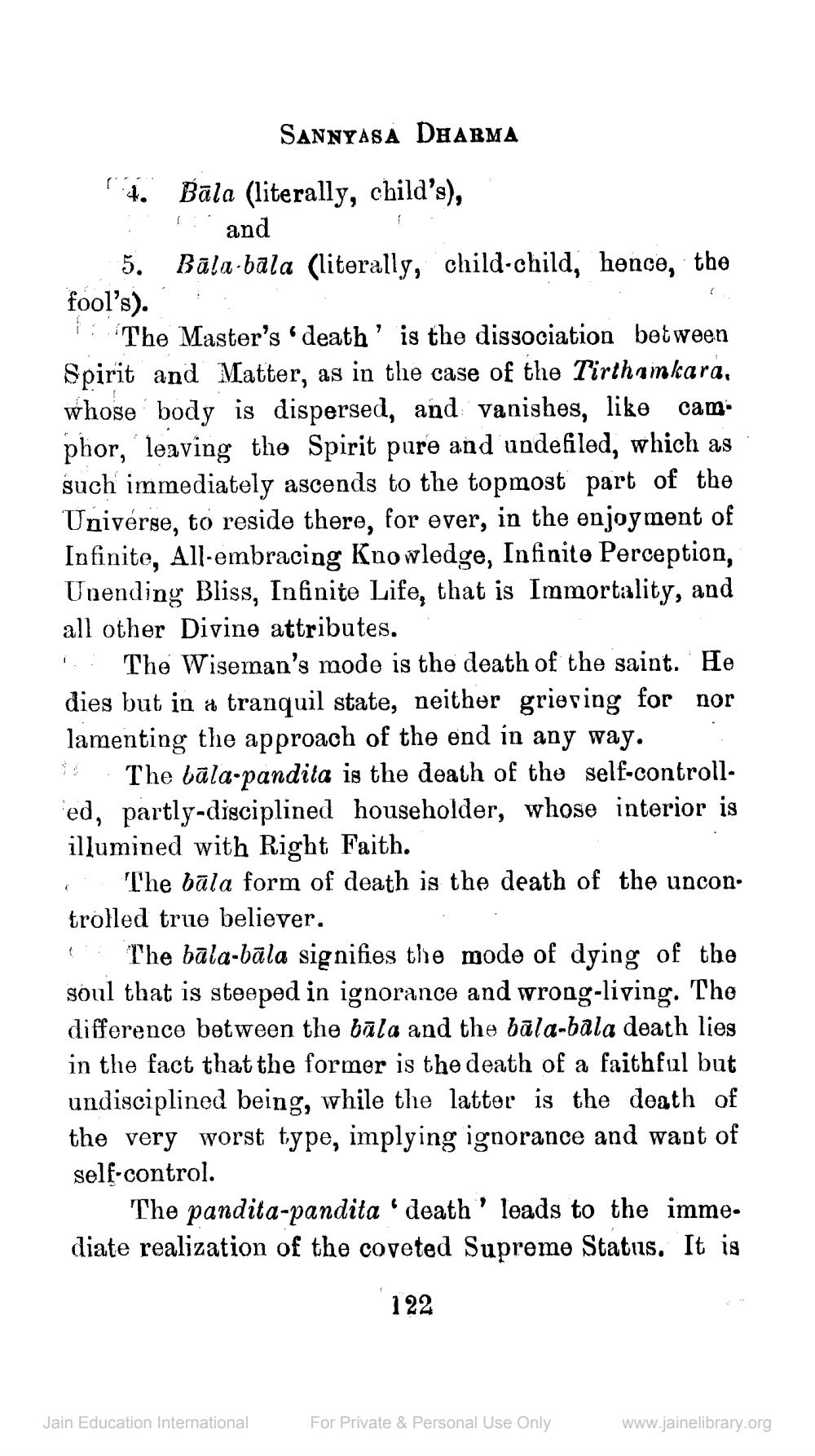________________
SANNYASA DHARMA
4. Bāla (literally, child's), ; and
5. Bāla bala (literally, child-child, hence, the fool's). 1. The Master's death' is the dissociation between Spirit and Matter, as in the case of the Tirthamkara, whose body is dispersed, and vanishes, like cam. phor, ' leaving the Spirit pure and undefiled, which as such immediately ascends to the topmost part of the Universe, to reside there, for ever, in the enjoyment of Infinite, All-embracing Knowledge, Infinite Perception, Unending Bliss, Infinite Life, that is Immortality, and all other Divine attributes. .: The Wiseman's mode is the death of the saint. He dies but in a tranquil state, neither grieving for nor lamenting the approach of the end in any way. $. The bāla.pandita is the death of the self-controlled, partly-disciplined householder, whose interior is illumined with Right Faith.
The bāla form of death is the death of the uncon. trolled true believer. ļThe bala-bāla signifies the mode of dying of the soul that is steeped in ignorance and wrong-living. The difference between the bala and the bala-bala death lies in the fact that the former is the death of a faithful but undisciplined being, while the latter is the death of the very worst type, implying ignorance and want of self-control.
The pandita-pandita' death' leads to the imme. diate realization of the coveted Supreme Status. It is
122
Jain Education International
For Private & Personal Use Only
www.jainelibrary.org




